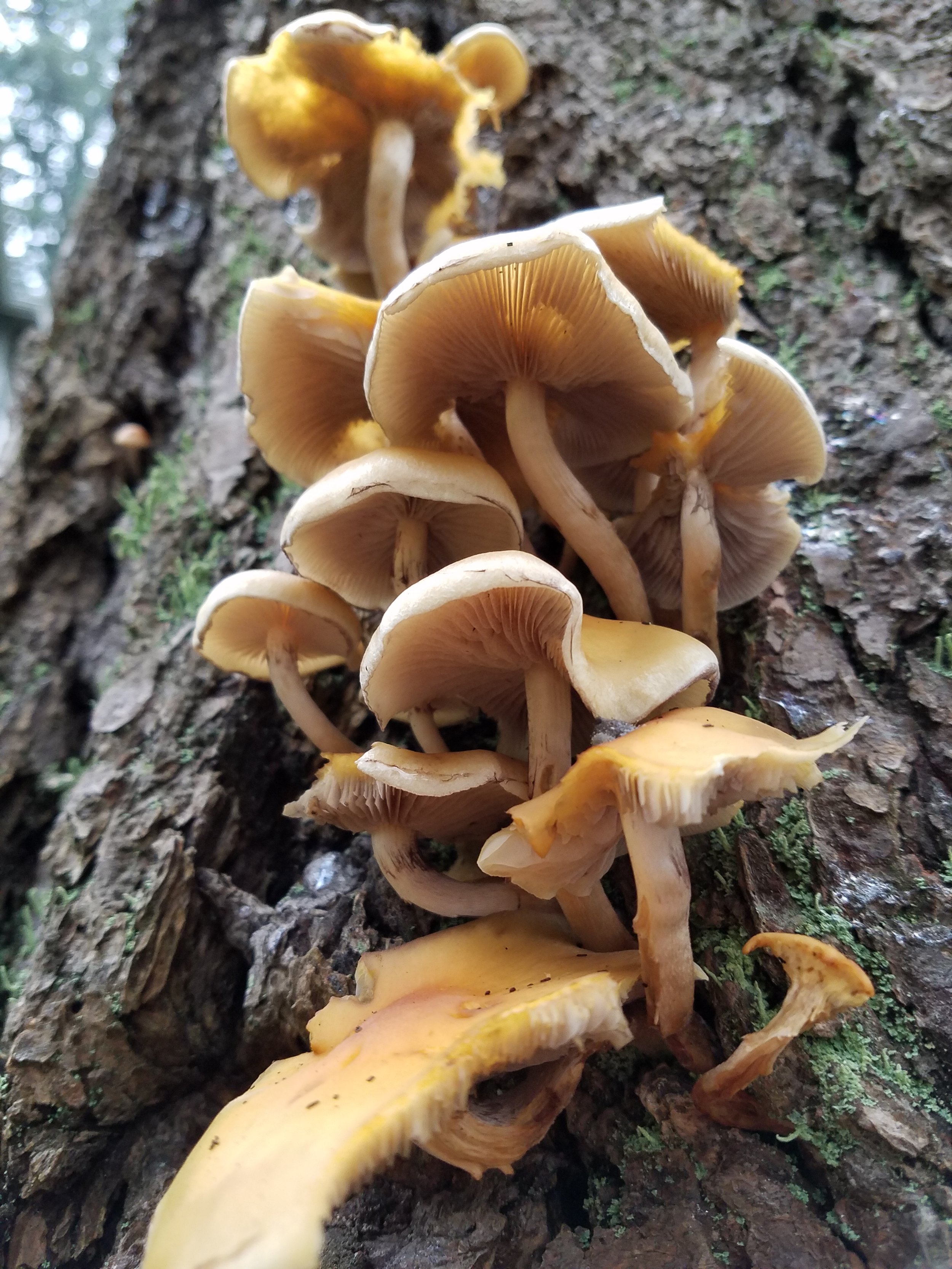Tree Snags: When Decay and Death Mean Habitat and Life
Written by Mary Johnson of the Sammamish Stewards
Several years ago, during a routine visual inspection of the trees in our yard, the arborist noticed a crack in the bark near the base of one of our Douglas-fir trees. A subsequent resistograph test, which looks at the condition of a tree’s internal structure, revealed significant decay. This structural defect meant potential trouble, given that the tree was growing close to our house. Even worse, it stood between our house and the direction of the prevailing winds, which often blow fiercely from the southwest during the fall and winter months.
Northern Flicker looking out from atop the snag.
We made the difficult decision to remove the tree. But instead of having the 125-foot tree cut down to its base—the usual approach to solving the problem of a hazardous tree—our arborist encouraged us to snag it. Snagging involved reducing the tree in size to about 30 feet, a height where it was unlikely to fall over or break under a windload as it slowly decayed over time.
We further learned that creating a snag, or a standing dead tree, would provide essential habitat for birds, small mammals, and other wildlife. In comparison, cutting the tree to the ground meant destroying habitat and losing all the vital ecosystem services the tree had been providing over its lifetime. Snagging made sense. Especially when so much habitat is being lost in our urban areas due to building construction.
The top of our snag was made to look like it had been broken in a storm. It’s since become a frequent perch for northern flickers, who have a 360-degree view of their territory.
Pileated Woodpecker working on the bark of the snag.
As the wood began to decay and the early decomposers set up shop, it wasn’t long before we began to see pileated woodpeckers dropping by on insect-hunting expeditions, making their characteristic rectangular-shaped holes in the bark as they excavated.
Smaller and rounder excavation holes started to appear up and down the trunk, evidence of the northern flickers and other woodpeckers at work. Eventually, some of these holes will deepen and become cavities—in short supply in the urban landscape—providing needed nesting sites for chickadees, nuthatches, and other cavity nesters.*
Just the other day, we witnessed an avian drama play out as a pair of chestnut-backed chickadees arrived and began to peck away at a starter hole, working diligently through the morning to enlarge it wood chip by wood chip. Suddenly a northern flicker appeared on the scene, driving the chickadees away, and taking over the hole. In the end, the hole was abandoned—for now anyway.
And then there’s the occasional brown creeper that drops by and spirals up the trunk as it probes the bark crevices for insects using its long, downward-curving bill. As the bark continues to loosen, will this tiny bird one day find a suitable nesting spot under it?
As the decay progresses, the fungi are thriving too. Recently, an impressive clump of mushrooms sprouted near the base of the trunk.
Fungi sprouting from the decaying snag.
For now, the snag in our yard is a vertical habitat. Eventually though it will fall to the ground, and an entirely new ecosystem will begin. The downed log will provide food and shelter to plants and animals as it rots and recycles nutrients back into the soil.
Snagging a tree might not be a viable option in all circumstances. But when it is, a standing dead tree is a wise investment in habitat creation and helping to maintain biodiversity.
*According to the Washington Department of Fish and Wildlife, west of the Cascade Mountains 39 species of birds and 14 species of mammals depend on tree cavities for their survival. “Living with Wildlife. Snags – The Wildlife Tree. The Importance of Snags in Your Neighborhood.” Washington Department of Fish and Wildlife, 2011.
Photo Credit: Red-breasted Nuthatch by Jerry McFarland.




